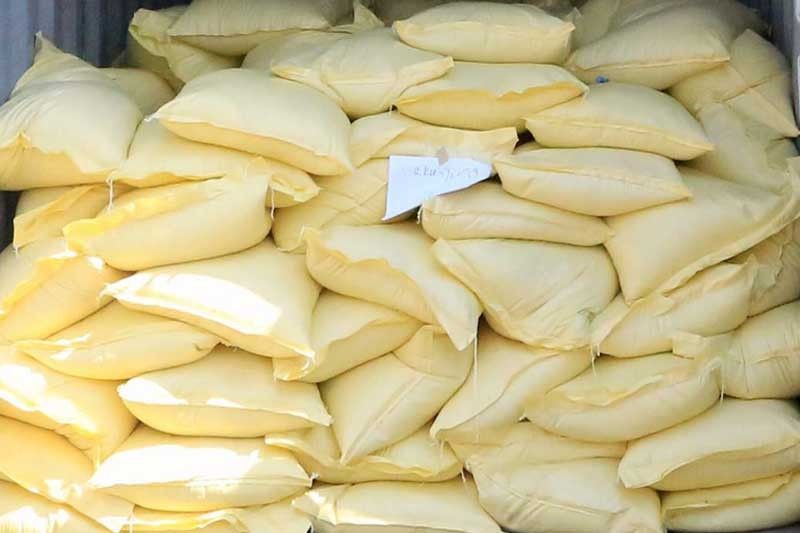Rice tariffication: What it is and how it can ease inflation

MANILA, Philippines — The Philippine government is pulling out all the stops to ease the pain caused by rising inflation, which has been hitting the poor the most.
Inflation spiked to a fresh five-year high of 5.2 percent in June from May’s 4.6 percent. Year-to-date, inflation averaged 4.3 percent, or above the Bangko Sentral ng Pilipinas’ 2-4 percent target range.
People have blamed soaring prices on the Duterte administration’s tax reform law, higher global oil prices and a weaker peso. Limited supply of subsidized rice, the country’s main staple, is also fanning inflation as it prompts poor families to buy commercial rice.
The staple grain accounts for 20 percent of the consumption of low-income households.
To cool down inflation, the country’s policymakers are strongly pushing for the replacement of import quotas on rice with tariffs.
Here is a look at what rice tariffication is, how it works and how the country’s economic managers expect this measure to fight upward price pressures.
So, what is rice tariffication?
The Duterte administration wants to amend the two-decade-old Agricultural Tariffication Act of 1996.
The amendments will pave the way for the lifting of quantitave restrictions (QR) that have allowed Philippine authorities to limit the volume of rice imports every year.
The QR—which prevents the influx of cheap rice from abroad to protect local farmers from foreign competition—is a preferential trade deal secured by the Philippines after becoming a member of the World Trade Organization in 1995.
Once the caps are lifted, individuals and businesses can import additional volumes of the crop from Southeast Asian countries like Thailand and Vietnam but will have to pay a 35-percent tariff. The collected tariffs will be used to fund mass irrigation, warehousing and rice research.
The WTO had allowed the Philippines to extend the imposition of QR several times to prepare local farmers for competition, but the Duterte government chose not to renew the waiver when it expired in June last year.
Socioeconomic Planning Secretary Ernesto Pernia earlier said that after the waiver ended in 2017, there had been “increasing pressure” from WTO member countries for the Philippines to fulfill its obligation to "tariffy" the staple grain and abandon its protectionist rice policies.
How can rice tariffication help tame inflation?
Based on estimates by the central bank, allowing cheap rice imports with tariffs will immediately lower the inflation rate by 0.4 percentage points.
The BSP also said liberalizing rice imports can slash prices of the food staple by as much as P7 per kilo.
However, its impact would not be enough to bring the 2018 full-year inflation rate back to the 2-4 percent target range, the BSP noted.
Monetary authorities expect inflation to average 4.5 percent this year.
Agriculture groups like Samahang Industriya ng Agrikultura (Sinag) believe going after rice importation cartels and boosting the productivity of Filipino rice farmers is a better approach.
Duterte has said reaching 100-percent rice sufficiency is impossible.
In a July 24 ANC report, Sinag chairman Rosendo So said opening up the Philippines to more rice imports could lead to higher prices. He said that since more foreign exporters would have access to the Philippines, they could, theoretically, manipulate supply to bring prices up.
Consumer group Bantay Bigas said in a Sun.Star Pampanga report on July 28 that "[i]t is easier for smuggled rice to enter the country with a liberalized importation policy as smugglers take advantage of the arrival of rice imports."
It added: "Under tariffication, more private traders are allowed to import resulting to the flooding of imported rice and making the monitoring of rice imports more difficult."
Has Congress made progress on the bill?
The House of Representatives appropriations committee has already approved the funding provision for the consolidated version of its rice tariffication bill.
Meanwhile, the counterpart version of the bill in the Senate is still being discussed at the committee level.
In his third State of the Nation Address, President Rodrigo Duterte certified the rice tariffication bill as an urgent and priority measure.
Presidential certification allows the Congress to proceed with the third reading of the bill once the measure is approved on second reading without having to wait for at least three days in between as otherwise required by the Constitution.
- Latest
- Trending

























